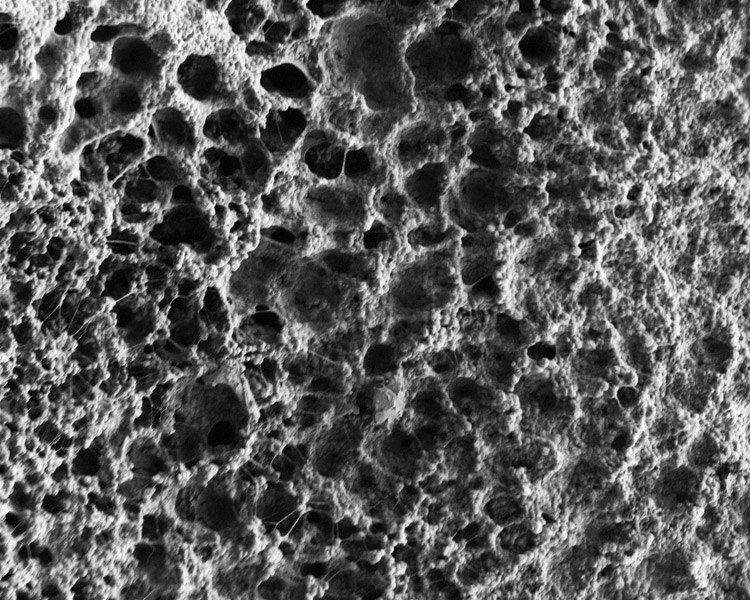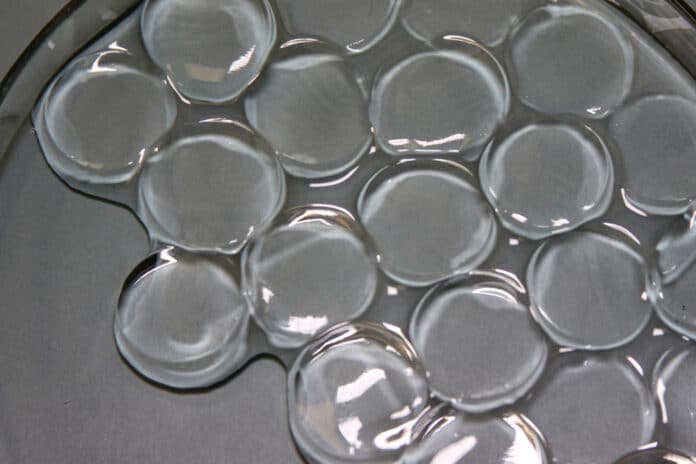Hygroscopic hydrogels are emerging as scalable and low-cost sorbents for atmospheric water harvesting, dehumidification, passive cooling, and thermal energy storage. However, devices using these materials still exhibit insufficient performance, partly due to the limited water vapor uptake of the hydrogels.
Engineers at MIT have created a superabsorbent substance that, even in desert-like circumstances, can absorb a record amount of moisture from the atmosphere. They have developed a salty gel that absorbs water vapor and holds in moisture without leaking. The water could then be heated, condensed, and collected as ultrapure water.
The material has been designed from hydrogel with enhanced absorbency. The team enhanced the hydrogel’s absorbency by infusing it with lithium chloride.
According to the researchers, more salt could be infused into the hydrogel than was previously conceivable. They discovered that the salt-loaded gel absorbed and held onto a record amount of moisture in various humidity levels, including arid conditions that have previously restricted the development of other material designs.
The superabsorbent gel may be utilized as a passive water harvester if it can be produced quickly and in large quantities, especially in the desert and drought-prone areas where the substance may continuously collect vapor and condense it into drinkable water. According to the researchers, the material might also be attached to air conditioners as a dehumidifying, energy-saving component.
Carlos Díaz-Marin, a mechanical engineering graduate student and member of the Device Research Lab at MIT, said, “We’ve been application-agnostic, in the sense that we mostly focus on the material’s fundamental properties. But now we are exploring widely different problems like how to make air conditioning more efficient and how you can harvest water. Because of its low cost and high performance, this material has so much potential.”
Certain salts are particularly effective at absorbing moisture, including water vapor, such as the rock salt used to melt ice. The best is lithium chloride, a salt that can take up more moisture than ten times its mass. Lithium chloride, if left in a pile by itself, could absorb vapor from the air, but the moisture would just collect around the salt, and there would be no way of retaining the absorbed water.

Hence, scientists decided to infuse the salt into the hydrogel to produce a material that could hold moisture and expand to hold additional water.
Gustav Graeber from MIT said, “It’s the best of both worlds. The hydrogel can store water, and the salt can capture a lot of vapor. So it’s intuitive that you’d want to combine the two.”
What would happen if the synthesis of the materials was permitted to continue for a few days or even weeks? If given enough time, might a hydrogel absorb even more salt? The MIT researchers experimented with lithium chloride, a superabsorbent salt, and polyacrylamide, a popular hydrogel, to find an answer. Hydrogel tubes were created by the researchers using conventional mixing techniques. The tubes were then cut into thin discs, and each disc was deposited into a lithium chloride solution with variable salt content. Each day, they weighed the discs to establish how much salt had infused into the gels, then put them back in their solutions after weighing.
In the end, they discovered that hydrogels did absorb more salt when given additional time. Compared to the previous record of 6 grams of salt per gram of polymer, hydrogels integrated up to 24 after 30 days of soaking in a saline solution.
The scientists next conducted absorption tests on numerous samples of the salt-filled gels under various humidity levels. They discovered the samples could expand and take in more moisture without leaking at all humidity levels. The gels caught a “record-breaking” 1.79 grams of water per gram of material at arid circumstances of 30 percent relative humidity, according to the research team.
Díaz-Marin, now looking for ways to speed up the material’s superabsorbent properties, said, “Any desert during the night would have that low relative humidity, so conceivably, this material could generate water in the desert.”
Graeber says, “The big surprise was that, with such a simple approach, we were able to get the highest vapor uptake reported to date. The main focus will be kinetics and how quickly we can get the material to uptake water. That will allow you to cycle this material very quickly so that instead of recovering water once a day, you could harvest water maybe 24 times a day.”
Journal Reference:
- Gustav Graeber, Carlos D. Díaz-Marín, Leon C. Gaugler, Yang Zhong, Bachir El Fil, Xinyue Liu, Evelyn N. Wang. Extreme Water Uptake of Hygroscopic Hydrogels through Maximized Swelling-Induced Salt Loading. Advanced Materials. DOI: 10.1002/adma.202211783
